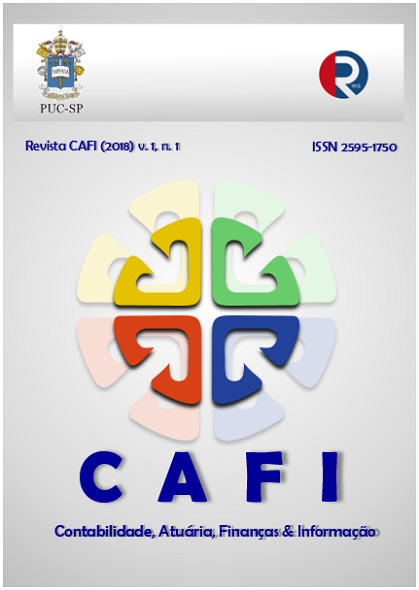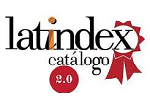Caso: diseño e implementación de la estrategia de intervención social en una institución micro financiera en la Ciudad de Cali-Colombia, con un modelo institucional orientado en temas de protección y capacitación de los servicios no financieros
DOI:
https://doi.org/10.23925/cafi.v1i1.36948Resumen
La ponencia busca mostrar un estudio de caso, que tiene como objetivo, el resultado de un modelo de educación financiera, diseñado he implementado en una institución micro financiera, con una estrategia focalizada de intervención social a población vulnerable, fundamentado en mejorar la calidad de vida de las personas en la sociedad, especialmente las que realizan actividades microempresariales y no cuentan con disponibilidad de recurso económicos. Finalmente en este trabajo se presenta un resumen de las teorías microfinancieras internacionales, que soportaron el estudio conceptual del modelo de educación citado en el párrafo anterior, adicionalmente se identifica la metodología utilizada y los resultados de las diferentes etapas investigativas que condijeron al estudio de caso investigativo, como lo fue el desarrolló un estudio piloto que dio como respuesta, una línea de orientación del doctor financiero y de implementación, articulada con las fases que se relacionan a la caracterización social demográfica de la población de Cali y un diagnóstico de la situación financiera que se encontró entre los clientes que asistieron a la asesoría en el consultorio financiero.
Citas
RODRÍGUEZ GARCÉS Catalina. (2008) Impacto de las microfinanzas: resultados de algunos estudios. Énfasis en el Sector. Financiero Revista Ciencias Estratégicas, vol. 16, núm. 20, julio- diciembre, pp. 281-298, Universidad Pontificia Bolivariana. Colombia.
OTERO MARÍA. (Ed.). (1998) El nuevo mundo de las finanzas microempresariales: estructuración de instituciones financieras sanas para los pobres, pp.339, Editorial Plaza y Valdes,
MARTINEZ Vásquez, Sergio A,(1997) Director de Saldebas, El nuevo Mundo de las Finanzas Microempresariales Julio de 1997
GÓMEZ Zamudio, Nancy, (2012) Las capacidades financieras de la población colombiana. Borradores de Economía No. 725, Banco de la República.
CAVADA ROBLES Daniel. (2002) Evaluación del área del Microcrédito un Techo para Chile. Centro de Investigación Social –CIS-. Santiago de Chile
AROCA, Patricio A. (2002) Estudio de programas de microcrédito en Brasil y chile, Urbana, Illinois, USA.
OSTROM, GARDNER Y WALKER ( 1994) “Rules, games and common-pool resources”, Ann Arbor, Estados Unidos, University of Michigan
OLIVARES Mirtha. (1989) Una metodología de trabajo con el sector informal (1989) Disponible en: http://centerforfinancialinclusionblog.files.wordpress.com/2011/09/accion- internationalaitec-a-methodology-for-working-with-the-informal-sector-spanish.pdf
MUÑOZ Lozano, Maribel: (2007) artículo La eficiencia del personal en las microfinanacieras influye en la cartera vencida, la Red de revistas científicas de América Latina y el Caribe, Universidad Autónoma del estado de México, ISSN: 0185-3937, disponible en http://redaly.uaemex.mx
Descargas
Publicado
Cómo citar
Número
Sección
Licencia
Declaração de Direito Autoral
Autores mantém os direitos autorais e concedem à revista o direito de primeira publicação, com o trabalho simultaneamente licenciado sob a Licença Creative Commons Attribution que permite o compartilhamento do trabalho com reconhecimento da autoria e publicação inicial nesta revista.
Declaração de Privacidade
Os nomes e endereços informados nesta revista serão usados exclusivamente para os serviços prestados por esta publicação, não sendo disponibilizados para outras finalidades ou a terceiros.









